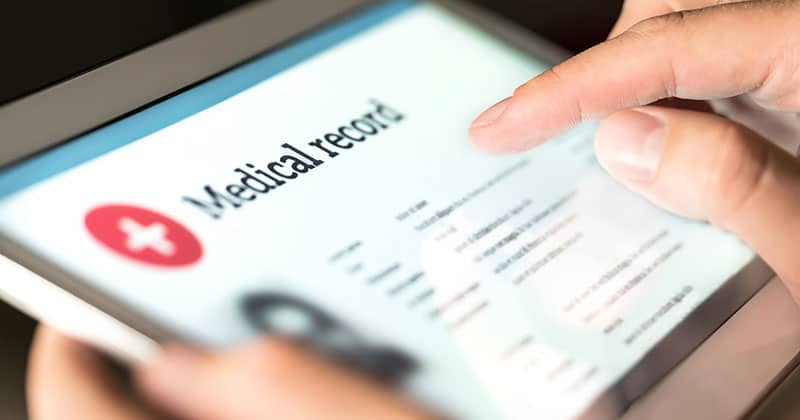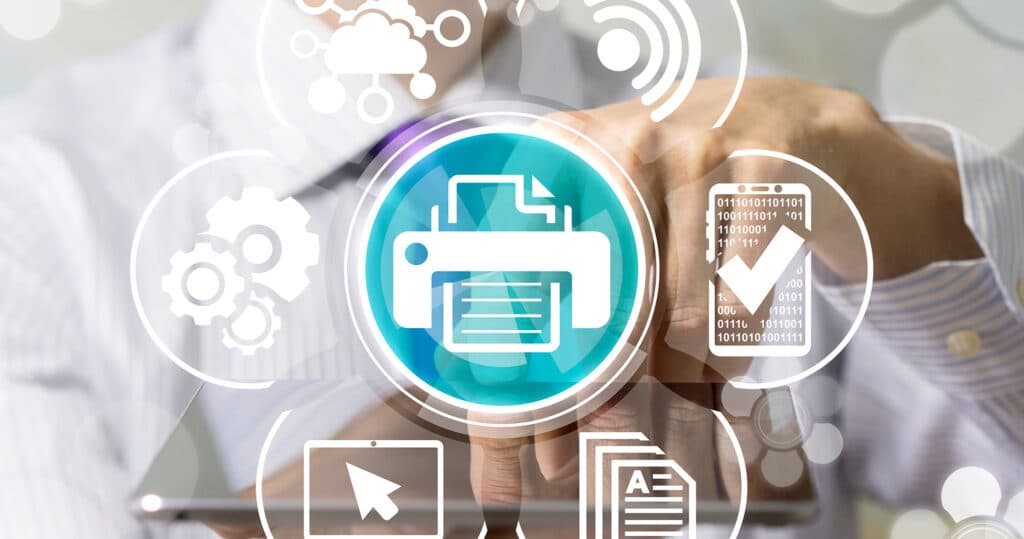In today’s busy medical offices, keeping track of patient documents and ensuring they’re secure is a high-stakes job. Old fax machines can make this job even harder.
But there’s a new way to send faxes called eFax that could simplify office processes and improve the patient experience. The big question is: Is eFax HIPAA compliant?
eFax lets doctors send and receive faxes through email. No old-school fax machine is necessary. This sounds promising because it can save time and make work simpler.
But, when dealing with patient information, you must ensure everything complies with HIPAA security standards.
This article will help you understand how eFax functions in medical practices. You’ll learn how it can improve workflow and whether it is really HIPAA compliant.
We’ll discuss the particular security measures eFax uses. This includes things like encryption to keep patient information safe.
We’ll also give you some smart tips to ensure your eFax works as it should.
Let’s dive in and find out how to use eFax in your medical practice.
What Is eFax, and How Is It Used in Healthcare?
A fax machine was once a necessary feature of any office. In a medical setting, however, it can create many opportunities for compromising patient information.
Much more secure, eFax is a modern tool for sending faxes. It lets you send faxes directly to selected intended recipients as email attachments. No fax machine is required.
It’s simple and works on your computer or mobile device. This is great for doctors and medical offices because it saves a lot of time and hassle.
Here’s how medical practices are using eFax:
Fax Online
You can send or receive faxes just by accessing your eFax account online. This is helpful for medical staff. They can fax patient info and important documents quickly without leaving their desks.
Fax by Email
This blend of email and fax works with many email services like Gmail and Outlook. Medical teams use this to send patient records and other sensitive information securely.
Fax by Mobile
With eFax, you can fax documents from your phone or tablet. This is perfect for healthcare providers on the go. They can send prescriptions or patient notes from anywhere, anytime. It’s just like HIPAA-compliant texting.
eFax makes faxing simple and quick. Everything is online, so you can fax anywhere with an internet connection.
Plus, you don’t need a traditional fax machine or dedicated landline. It’s like having a fax machine in your pocket that’s always on and ready.
eFax keeps track of all your faxes, too. You can always check what you’ve sent and received.

The Role of HIPAA in Healthcare Data Protection
HIPAA is a US law designed to keep patient information safe in healthcare. It’s like a rulebook that doctors, hospitals, and other health facilities must follow to protect data.
HIPAA makes sure private health information stays private. It sets standards for keeping, sharing, and using medical information. This helps keep patient health information safe and only accessible to designated people.
FROM ONE OF OUR PARTNERS: Checklist to Ensure HIPAA Compliance at Your Practice
Is eFax HIPAA Compliant?
Yes, eFax can be HIPAA secure, but you still have to be careful.
Even with eFax’s strong safety features, there are ways HIPAA might be violated if your eFax tool isn’t used correctly.
Here are some risks:
Human Error
Sometimes, people make mistakes like sending a fax to the wrong person. Even with secure eFax, this can be a problem.
Lack of Controls
In a bustling healthcare practice, it’s important that only specific people can see patient faxes. eFax has ways to control this, but you must set them up properly.
Cyberattacks
Hackers are always trying to get private information. eFax uses very strong protection to stop them. Even so, your practice also needs to be careful about other ways hackers could try to get in.
Cyberattacks can have big consequences. In the US, more than half of health groups couldn’t provide services after their computers were attacked by ransomware. In 2023, when these attacks happened, healthcare providers had to stop working for about 19 days on average.
Lost or Stolen Devices
Patient information could be at risk if someone’s phone or laptop with eFax is lost or stolen. That’s why it’s important to also protect devices.
Lack of Compliance
HIPAA has a lot of rules. eFax helps follow them by keeping track of faxes and using strong password-protected access. But your office also needs to ensure everyone understands and follows HIPAA rules.
eFax uses military-grade encryption to keep faxes safe when they’re sent and stored. This means it scrambles the information so only the intended recipient can read it.
eFax also checks who is sending and receiving the fax to ensure they’re allowed access to the patient’s information. This helps keep medical information safe and follows HIPAA rules.
5 Steps to Ensure Your eFax Is HIPAA Compliant
Here’s how to make sure your eFax use stays within the rules:
Choose Secure Software Like Updox.
Updox is a digital solution that keeps your documents safe and follows HIPAA rules. It lets you send and receive documents without needing paper or machines. Everything goes through a secure inbox that Updox monitors.
Set Up Access Controls.
Make sure only the selected personnel in your office can see patient faxes. Updox lets you control who gets access with special login points. This keeps private information safe from those who shouldn’t see it.
Use Strong Encryption.
eFax Protect keeps your faxes safe with military-grade encryption. This is an extremely secure way to scramble information so only the intended recipients can unscramble it.
Keep an Eye on Your Faxes.
Keep track of all your faxes. You can see who sent a fax, who received it, and when. This is important for complying with HIPAA rules that say you must monitor patient information.
Train Your Team.
Make sure everyone in your office knows how to use eFax safely. They should understand HIPAA rules and how to protect patient information.
By following these steps, you can use eFax in a way that’s safe, secure, and follows the law. This helps you protect your patients’ information and keeps your medical practice running smoothly.
RELATED ARTICLE: Securing Patient Data in Telehealth

5 Benefits of Leveraging a Truly HIPAA-Compliant eFax
Using a HIPAA-compliant eFax isn’t just about following standards. It changes how your medical practice works and improves the patient experience.
Here’s how:
Added Mobility
Like sending an email, eFax lets you fax without a fax machine. You can send and receive faxes from your computer, phone, or tablet. This means you can fax from anywhere at any time.
It’s perfect for busy medical offices. You no longer need to wait by a fax machine or deal with paper jams.
Financial Savings
With eFax, you can say goodbye to the costs of a traditional fax machine. No need for ink, paper, or maintenance. Plus, you don’t have to pay for a separate phone line just for faxing. This means more money stays in your practice.
Increased Patient Safety
A HIPAA-compliant eFax uses strong security measures. It encrypts your faxes so only approved people can read them. This is like putting your fax in a safe that only the person you’re sending it to can open. This keeps your patients’ information private and secure.
Tracking
Traditional fax machines can lose faxes, or allow faxes be removed by the wrong person. With eFax, every fax is tracked and recorded. You always know where your fax is and who has seen it. This means important patient information doesn’t get lost or fall into the wrong hands.
Integration with Existing Devices
eFax works with all your devices and applications. Whether you’re using a computer in the office or a phone on location, you can fax. You can even fax different types of documents. Send PDFs, pictures, and more. This makes it easy to share a variety of patient information quickly and safely.
Using eFax in your medical practice makes things easier for your team and safer for your patients.
It’s a simple change that can greatly impact how your practice runs and how well you can take care of your patients.
Steps to Ensure eFax Is HIPAA-Compliant at Your Healthcare Practice
Making sure your eFax is safe and follows HIPAA rules is key.
FROM ONE OF OUR PARTNERS: First Step Towards HIPAA Compliance: The Security Risk Assessment
Here are simple steps you can take to check and improve your practice’s eFax system:
Check with Your eFax Provider.
Start by looking at your eFax service’s website or your contract with them. You want to see words like “HIPAA-compliant” or mentions of strong security measures, like encryption. This means they work hard to keep patient information safe and meet HIPAA standards.
Train Your Team.
Teach everyone in your practice how to use eFax. This includes knowing what information is okay to fax and how to make sure it goes to the right person. Everyone should know the HIPAA rules and why they’re important. This helps keep patient information safe.
Use Strong Passwords.
Make sure everyone who uses your eFax system has a strong password. This means a mix of letters, numbers, and symbols—the longer, the better.
Regular Checkups.
Just like patients need regular checkups, so does your eFax system. Set times to check that everything is working as it should. This includes ensuring all faxes go where they’re supposed to and that your security measures are tight.
Stay Up-to-Date.
The world of technology changes fast, and so do the tricks that hackers use to steal information. Make sure your eFax system gets regular updates. Also, keep your team in the know about new security threats. This way, your practice can stay one step ahead.





